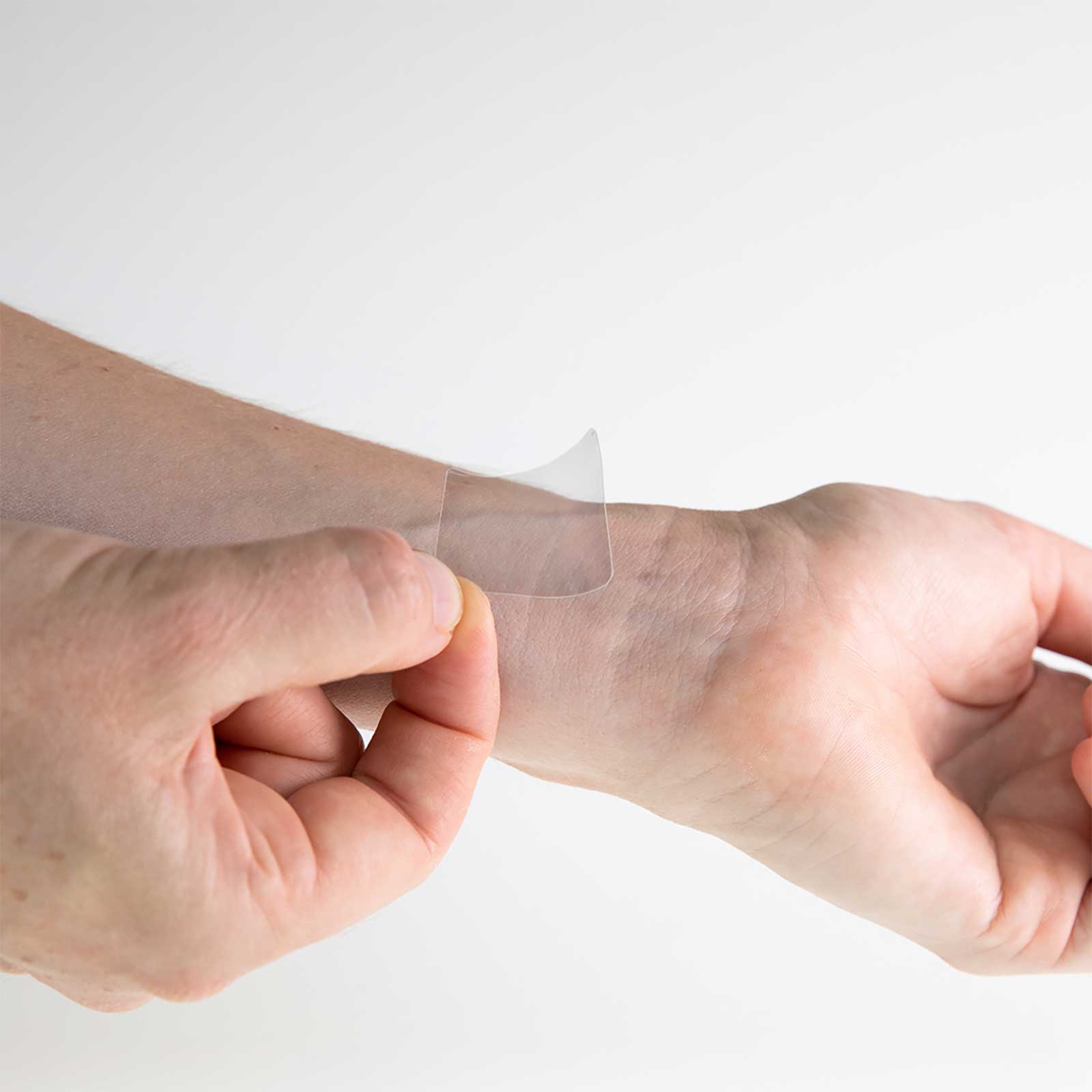The advantages of transdermal patches.

Is it a gimmick?
Lifebio transdermal patches deliver the active ingredient through your skin and eventually into your bloodstream.
Transdermal patches were invented by Alejandro Zaffaroni, he received his patents on transdermal systemic drug delivery in the early 1970s. The most common and successful use of transdermal patches has been with nicotine in the fight to quit smoking.
Is it a gimmick? No not at all, transdermal patches have been used to deliver prescription-grade drugs.There are many advantages to using a transdermal patch over taking pills, one very important advantage of using patches over the traditional ‘pill’ is the active ingredients don’t pass through your digestive system making them more bioavailable.

A large proportion of the active ingredients in a pill can be lost to ‘First Pass’ (your digestive system) whereas the ingredients from a patch pass directly into your epidermis and into your bloodstream.
The obvious advantage is if you don’t like taking pills or you find them troublesome with your digestion or they disagree with you in some way using a patch can be of enormous benefit

How it works
The patch is applied to the skin, the natural heat from your skin triggers the pores present in the upper layer of the skin that causes water to be drawn out of cells into the blood capillaries surrounding it. This increases blood flow to that area. Molecules of the active ingredient pass through these pores directly into your bloodstream. In this way, transdermal technology allows active ingredients to be delivered very effectively with no pain while simultaneously ensuring that they are penetrating deep into your body tissues.

Backed by science
The skin is the largest organ in the human body by mass, with an area of between 1.5 and 2.0 m2 in adults. Drugs have been applied to the skin to treat superficial disorders, for the transdermal administration of therapeutics to manage systemic ailments and as cosmetics, dating back to the oldest existing medical records of man. For instance, the use of salves, ointments, potions and even patches, consisting of plant, animal or mineral extracts, was already popular in ancient Egypt and in Babylonian medicine (around 3000 BC).
However, the routine use of transdermal delivery systems only became a common practice in the latter third of the 20th century when delivery technology was developed to enable precise and reproducible administration through the skin for systemic effects.

Alejandro Zaffaroni was a biotechnology innovator whose early work with controlled drug delivery methods, particularly his early concepts for transdermal patches, led to the growth of research into innovative drug delivery systems.
Zaffaroni founded ALZA Corporation in 1968 to pursue his ideas for controlled drug delivery systems. His first innovations at ALZA included a thin film for the eye for glaucoma treatment and a contraceptive device that released progesterone. Zaffaroni received his patents on transdermal systemic drug delivery in the early 1970s. In 1981, ALZA worked with the Swiss company Ciba-Geigy, and the FDA approved the first transdermal delivery system with scopolamine, Transderm-Scop®, for motion sickness, followed closely by Transderm-Nitro® for angina. ALZA ultimately brought over 20 prescription products to market before being acquired by Johnson & Johnson.
Transdermal patches are now widely used as cosmetic, topical and transdermal delivery systems. These patches represent a key outcome from the growth in skin science, technology and expertise developed through trial and error, clinical observation and evidence‐based studies that date back to the first existing human records.

Proof patches work
To date, the FDA has approved more than 40 transdermal products containing substances such as nicotine, hormones, pain medications, and antidepressants.Probably the best-known application for transdermal patches in recent times has been in the form of nicotine patches as a way of quitting smoking.Until recently patches were used for prescription-grade drug delivery and not for over-the-counter remedies and vitamins.The word ‘bioavailability’ is often used when describing the advantages of transdermal patches.
What does higher bioavailability mean?
According to the National Institute of Health’s Office of Dietary Supplements, bioavailability refers to the amount of (the nutrient) in food, medications, and supplements that is absorbed in the intestines and ultimately available for biological activity in your cells and tissues.
Advantages of patches over traditional delivery systems
Patches offer ‘high bioavailability’ because the active ingredients pass through the skin and directly into your bloodstream.
Administration of therapeutic agents across the skin enables drugs to avoid first‐pass (your metabolism) chemical or enzymatic degradation in the gastrointestinal tract or liver where for example capsules (pills) might lose a large amount of their effectiveness when passing through your metabolism.









